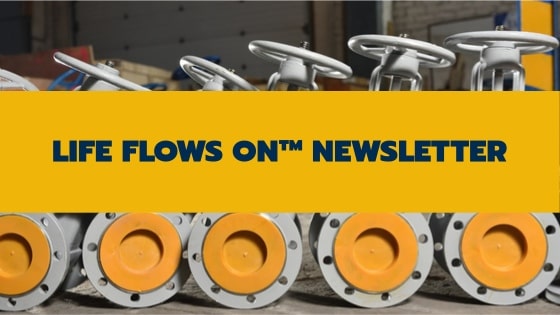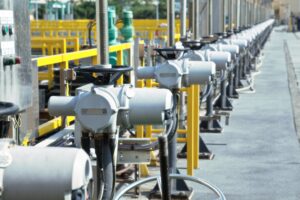The Difference Between A Pneumatic Actuator And Electric Actuator
The global market for actuators and valves is expected to reach $127,129 million by 2025, growing at a rate of 5.3%. These essential tools help keep our devices and tools running.
Two of the most common types of actuators are electric and pneumatic actuators. They’re often confused due to the similarities they share. It’s important to know the differences that set them apart so you can choose the best one for your needs.
Read our guide to understand all the different types of actuators you have to choose from and how to pick the best one.
Actuator Types
It can be somewhat overwhelming to choose an actuator when you’re presented with a huge variety of options. It’s tough to know what each type does and why you should choose one over the other.
One of the best ways to understand the differences between an electric and pneumatic actuator is to understand what an actuator does and all the different types.
Pneumatic Actuator
A pneumatic actuator contains pressurized gas. They’re usually powered by an electric compressor, creating a type of electric pneumatic actuator. There are other options, such as hydraulic motors.
The pneumatic actuator is used in a variety of devices and industries. They make up almost all traditional combustible car engines. Reliability, power, and cheap production are what make them so popular.
Electronic Actuator
As their name suggests, these actuators use electricity to create and power motion. Most electronic actuators have a ball or screw connected by a coupler to a power source.
These actuators can use an electric piston motor, but it’s more common to see servo or stepper options to create power.
Servos are more precise and can handle faster speeds, but this improved performance comes at a higher cost. Steppers are cheaper and still accurate at lower speeds.
The electric actuator is most common in precise, delicate operations like robotics. They’re easy to program and customize to do whatever job you need them to.
Hydraulic Actuators
A hydraulic actuator uses fluid power to create motion. It has a cylinder or fluid motor.
One of the most common and important uses for these devices is the brake system of most modern cars. They use hydraulics to stop you quickly and accurately.
You can also get an electric hydraulic actuator for the benefits of electric and hydraulic power. It’s also common to see hydraulic electric options.
Linear Actuators
These actuators move heavy loads using energy created in a line. Depending on how they’re made, there are three main types of linear actuators; hydraulic, pneumatic, and electric.
A hydraulic linear actuator works at high speeds and maintains a consistently high level of power. Leaking fluid can cause performance and cleaning issues, and the maintenance and component costs tend to be high.
A pneumatic linear actuator is similar but uses drive fluid instead of hydraulic fluid. They maintain force well, work in extreme temperatures, and are affordable. They need to stay running longer using specifically sized components.
An electric linear actuator uses an electric motor to turn rotary motion into linear motion. They’re quiet, allow for accurate controls, and work for a wide variety of jobs thanks to their programmability. This comes at a higher initial cost and a larger size.
Knowing the different types of actuators is only one step of the process, but it’s a great place to start. It’s important to know every part of your machine, and that includes the valves that your actuators help power. Check here for more on the different ball valve types.
Choosing the Right Actuator
Once you’ve learned all the different types of actuators you have to choose from, it’s easy to compare them and decide which one bests suits your needs.
The actuator you should choose depends on the amount of power and speed you need. Hydraulic actuators provide the most force. Pneumatic actuators are faster and far more powerful than their electric counterparts.
Don’t forget to consider what you’ll use your actuator for. A pneumatic option provides more power for longer periods of time than electronic options. Throwing hydraulics into the mix can help cut costs but also decrease the operational time.
It’s important to consider long-term costs as well as the initial price of the machine.
Pneumatic actuators are simple to make, giving them a low initial cost, but getting and maintaining all the necessary components can get expensive. 24% of costs come from maintenance, with the other 76% coming from electricity to power the actuator.
A pneumatic actuator uses gases that are safer and easier to store. They’re also durable and long-lasting.
An electronic actuator is easy to add to the systems you already have. They require fewer components and have lower operating costs.
Another personal preference that can help you decide on what type of actuator you need is how much noise you can stand. An electronic actuator is much quieter than a pneumatic actuator.
You may want to consider an electric pneumatic actuator or other combination option to get the benefits of all the different types. This is another benefit of being able to compare an electric and pneumatic actuator, as you can examine the pros and cons of both and see how they balance each other out when combined.
Where to Get a High-Quality Actuator
Electronic and pneumatic actuators both provide power to machines by converting and providing energy. They do so in very different ways, which is why it’s important to understand what sets them apart from each other.
Choosing an actuator depends on your needs and budget.
Consider how much power and speed you’ll need to complete your job and determine how precise the work needs to be. A pneumatic actuator will give you long-lasting power but isn’t as easy to control.
Don’t forget to factor in both initial and long-term costs before making a purchase. A pneumatic actuator may not cost more at first but can lead to higher maintenance and component costs over time.
It’s also important to get your actuator from the best possible vendor. Just because two different places offer the same type doesn’t mean they’re of equal quality.
We have a wide variety in stock. Check out our available actuators and contact us today for more information.


